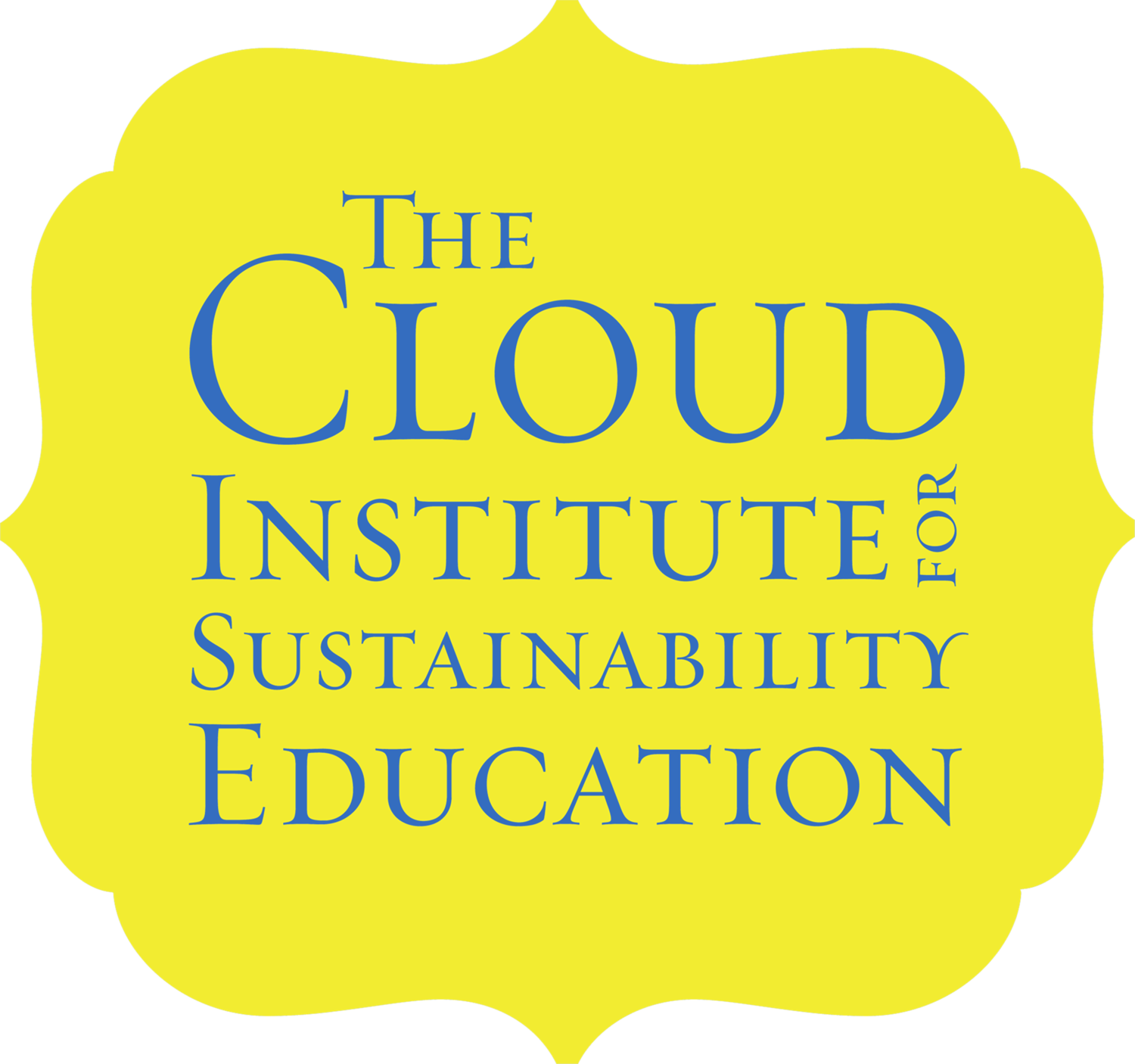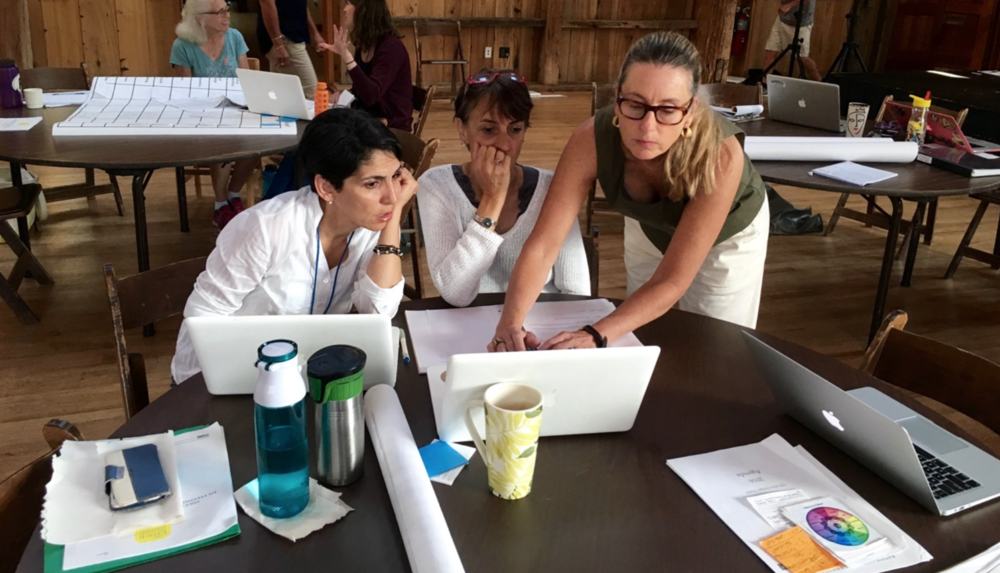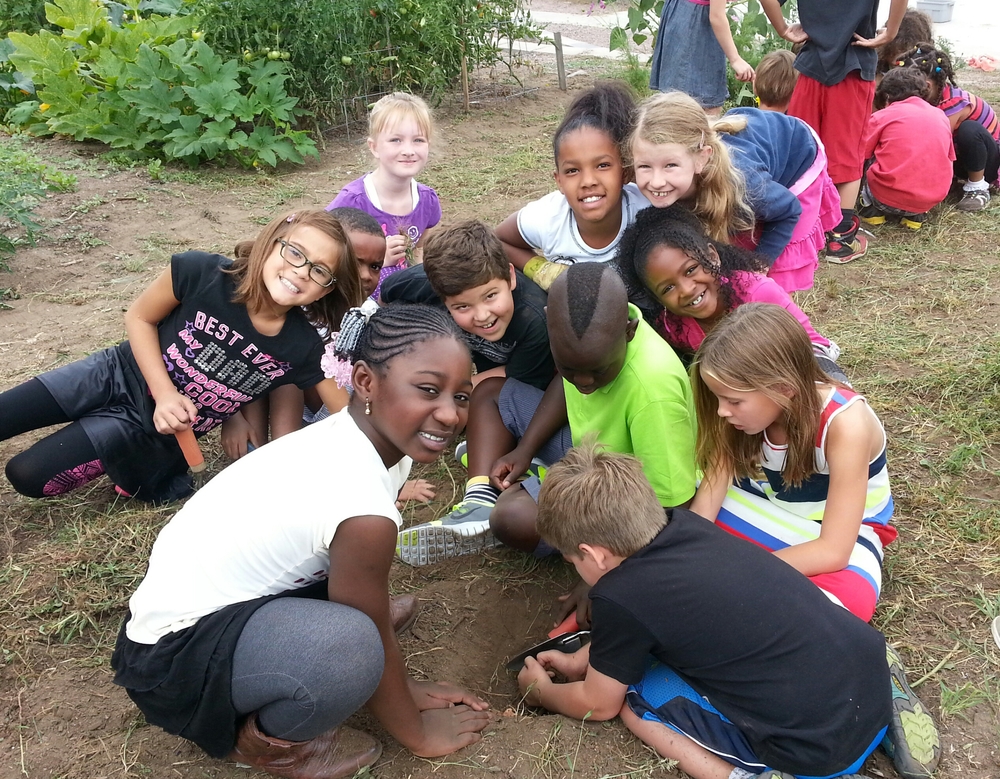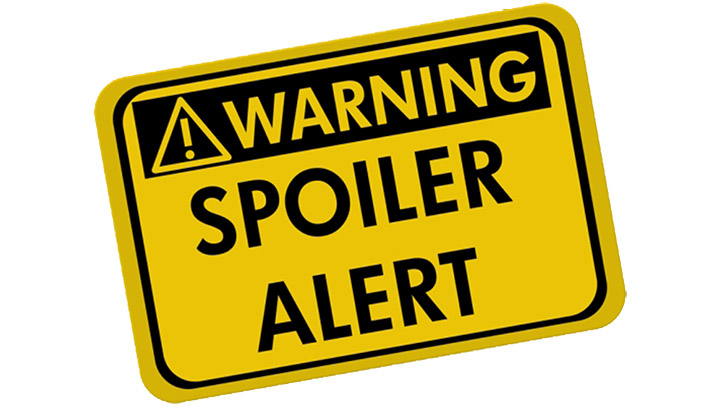Aloha! Today, we’d like to introduce you to Kapalama Middle School, located on the island of Oahu in Hawaii. This native Hawaiian middle school, on one of The Kamehameha School’s three campuses, “educates children of Hawaiian ancestry to become good and industrious men and women in spirit, mind and body and to use their talents and abilities to positively contribute to the world.” Kapalama’s unique building is designed with an open floor plan and giant common spaces. Innovation is a priority here, as the school embraces Education for Sustainability, curriculum mapping, effective instructional practices, character and student leadership.
A serendipitous beginning
The Cloud Institute’s relationship with Kapalama began almost by chance. In the Spring of 2011, Dr. Pua Kaai, Principal of Kapalama Middle School was inspired to explore EfS after reading Jaimie’s chapter, Educating for a Sustainable Futurein the book, Curriculum 21 Essential Education for a Changing World (Ed. Heidi Hayes Jacobs. 2010). Soon after, Dr. Kaai, Dr. Erika Cravalho, Middle School Curriculum and Assessment Coordinator and several other key members of the leadership team at Kapalama shared a meal with Jaimie at one of Heidi’s curriculum mapping conferences in Saratoga, New York and a productive partnership was born. Back in Hawaii, two enthusiastic Kapalama teachers volunteered to participate in The Cloud Institute’s EfS Curriculum Design Studio™ in NYC and followed that up with ongoing Skype coaching sessions with Jaimie throughout that Fall. Hoping to engage more members of the school community, leaders at Kapalama invited Jaimie out for a whole school professional development day that included a keynote address and the EfS Intro. She returned that next summer, taking the first full cohort of teachers through their own EfS Curriculum Design Studio™. Since then, Jaimie has been coaching the entire faculty and most staff members via SKYPE throughout the year. In addition, she has been making the trip to Oahu each February (someone has to do it!) to provide the full faculty PD day and to work on whole school sustainability on site. She returns each summer to support Kapalama teachers during their Studio as they innovate, design, document, map and “sustainablize” their courses and units, assessments and performance criteria.
“This is something we have to do”
Sustainability holds special meaning for native Hawaiians, making EfS a great fit for Kapalama. “It has been about really getting kids to think hard about how to live well within the means of nature, which is very much, what our ancestors did and what our ancestors personified. When we met Jaimie in Saratoga, the more she spoke about the work of EfS, the more I realized EfS is so much of who we are culturally at our school, and our people. It was nice to expand our understanding of sustainability beyond the concept of reuse, reduce, recycle to include the ideas of systems thinking, sense of place, and cultural preservation and transformation,” explains Erika. “We are starting to think about how we can get our students to think critically so they can thrive in, not just our current reality, but in the future we will invent together. Working with an indigenous population of children, this is something we have to do.”The school’s long term commitment to this work has produced tangible results. “All of the teachers are at that point where EfS standards are part of their curriculum mapping every day. It’s operational,” describes Pua. “It’s been really interesting to see how the use of standards has evolved over the years. The trend has shifted from only focusing on content standards, like science or math, towards the EfS Standards and how the various disciplines can work together to achieve them. It’s more holistic, culturally relevant, and it just makes more sense.” Stressing the benefits of including the whole school in this work, she says, “What we do is bigger than the classroom. It’s about each of us shifting our mindset to thinking about our thinking, and the sustainability perspective.”
Erika points to one of Kapalama’s interdisciplinary exemplars: an extensive unit on Biomimicry that involves ELA, Science, Math, Social Studies and Technology. “It caught fire, which is a fantastic thing to watch.” Another exemplar includes a student developed planet-friendly app for increasing the regenerative capacity of the aina (Hawaiian for land). EfS at Kapalama doesn’t end when the students leave for the day. Recently a group testified about sustainable development issues at a local community meeting, showing that in-school learning has real life results.
Looking Ahead
Kapalama recognizes the importance of assessment and data collection in successfully doing this work. Jaimie’s most recent February visit focused on the question, “To what extent are we actually educating for sustainability, and to what extent are we assessing for it?” To this end, a large scale analysis was initiated on their mapping software, Rubicon Atlas, seeking evidence of EfS content and performance indicators in the core curriculum. It took one second to “push the button” to get the data, and then Jaimie and the faculty spent the rest of the day analyzing the data and determining their strengths, gaps and next steps.
The results?
In summary: Every team and every discipline is targeting EfS standards and indicators; all EfS standards (not all indicators yet) are being targeted in the Middle School; many but not all EfS indicators being targeted are being assessed for, and that will be the focus for the rest of this year and next. “It was thrilling. The energy in the building was palpable,” says Jaimie. "There is so much is going on and more to do, as always." In addition to assessment, calibration and the development of EfS performance criteria, the rest of the remaining work in the sixth and final year of this long term contract will focus on fully passing the “baton” to the team who will carry the work forward in perpetuity. Or in Hawaiian, Mau loa "forever"...













